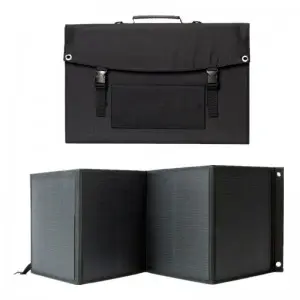Are you tired of paying high monthly electricity bills? Do you want to go green and reduce your carbon footprint? Installing solar panels can be a good solution. Solar panels have grown in popularity over the years and can help you save money while using renewable energy. However, the installation process can seem daunting for beginners. This guide will help you learn everything you need to know about installing solar panels on your home.
Before starting the installation process, keep the following points in mind:
1. Check local regulations: Different regions have different regulations on the installation of solar panels. Please consult your local authorities to ensure that your installation complies with all relevant regulations.
2. Consider your energy needs: Solar panel systems come in different sizes and capacities. It is important to calculate your energy needs and choose the right system to meet your needs.
3. Determine your budget: Upfront installation of solar panels can be expensive. Determine your budget before starting the installation process to ensure you can afford the system.
Now that you’ve considered the above, it’s time to start the installation:
1. Identify the best location: Solar panels work best in direct sunlight. An ideal location for solar panel installation is a south-facing roof. If your roof doesn’t face south, you can still install panels on a north, east, or west-facing roof, but it may not be as efficient. Make sure there are no trees or buildings that can block sunlight.
2. Install the Mounting Bracket: The mounting bracket provides a stable base for the solar panel. They need to be securely mounted to ensure the panels don’t fall off in high winds. If you’re not comfortable installing the brackets yourself, it’s best to hire a professional.
3. Install the solar panel: Once the mounting brackets are in place, the solar panel can be installed. The panels need to be attached to each other and to the mounting brackets. Be sure to follow the manufacturer’s instructions carefully and make sure the panel is installed correctly. If you’re not sure, it’s best to hire a professional installer.
4. Connect the wires: The solar panel produces direct current, which needs to be converted to alternating current to power your house. This can be done with an inverter usually installed near the main electrical panel. The inverter needs to be connected to the solar panels and grid. It is very important to make sure the wiring is correct to prevent electrical hazards.
5. Test system: After the installation is complete, you can test the system. Turn on the inverter and monitor the power output. You can also check the performance of your system with a solar panel monitoring app.
All in all, installing solar panels is a great way to save money and reduce your carbon footprint. While the installation process might seem daunting, following the steps above can make it easier. Make sure you follow all relevant regulations, choose the right system, and if you’re not sure, hire a professional. Once your system is installed, you can enjoy the benefits of renewable energy.
Post time: May-31-2023
